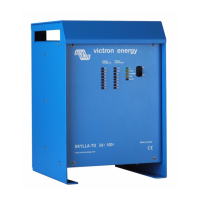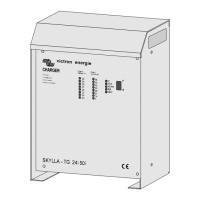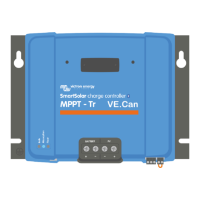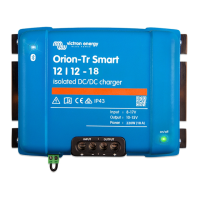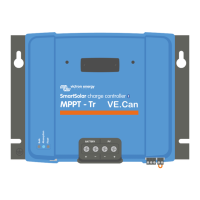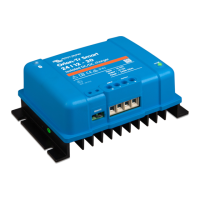
Do you have a question about the Victron energy TITAN 48/50 and is the answer not in the manual?
| Output Voltage | 48 VDC |
|---|---|
| Output Current | 50 A |
| DC Output Power | 2400 W |
| Battery Type | Lead-acid, Lithium-ion |
| Protection | Overtemperature |
Victron Energy's background as a power systems designer and manufacturer, and its R&D focus.
Manual scope covering Skylla-TG 24/80, 24/100, 24/100 3-Phase, and Titan 48/50 chargers.
Essential safety warnings for handling the battery charger, including electrical hazards and gas risks.
Details the fully automatic 3-stage charging characteristic (IUoUo) and operation of the Titan charger.
Recommended battery capacities for Titan models and factory charging voltage settings for lead-acid batteries.
Covers internal electronic protections like current limits, short circuit, input voltage, over-voltage, and temperature.
Guidance on charger placement, earth, mains, and battery connections, including sequences and cable thickness.
Explains front panel controls, LEDs, and the automatic charging sequence (boost, equalize, float modes).
Advises on annual battery connection checks and keeping the charger clean and dry.
Procedures for safely opening the charger cabinet to access DIP switches and potentiometers.
Guide to adjusting float and boost voltages using potentiometers and DIP switches for optimal charging.
Setting equalize mode duration and compensating for diode-splitter voltage loss via DIP switches.
Adjusting boost voltages for traction batteries and using the charger as a DC power supply.
Connecting sensors for automatic voltage adjustment based on temperature and cable voltage loss.
Setting up intelligent startup or forcing boost mode upon charger activation using DIP switch 2.
Connecting an output voltage alarm and optional remote panels like COV, CMV, CSV, and SKC.
Instructions for connecting remote on/off and boost switches for external control of charger functions.
How to connect a voltmeter to the remote connector for voltage measurement.
How to connect an ampèremeter to the remote connector for current measurement.
A table listing common problems, their causes, and recommended solutions for diagnosing charger faults.
Covers general charger behaviour, efficiency, environmental ratings, input voltage/frequency ranges, and input current.
Details output voltages, ranges, charge characteristics, voltage compensation, stability, and current ratings.
Provides information on cabinet construction, dimensions, weight, and various connection types.
